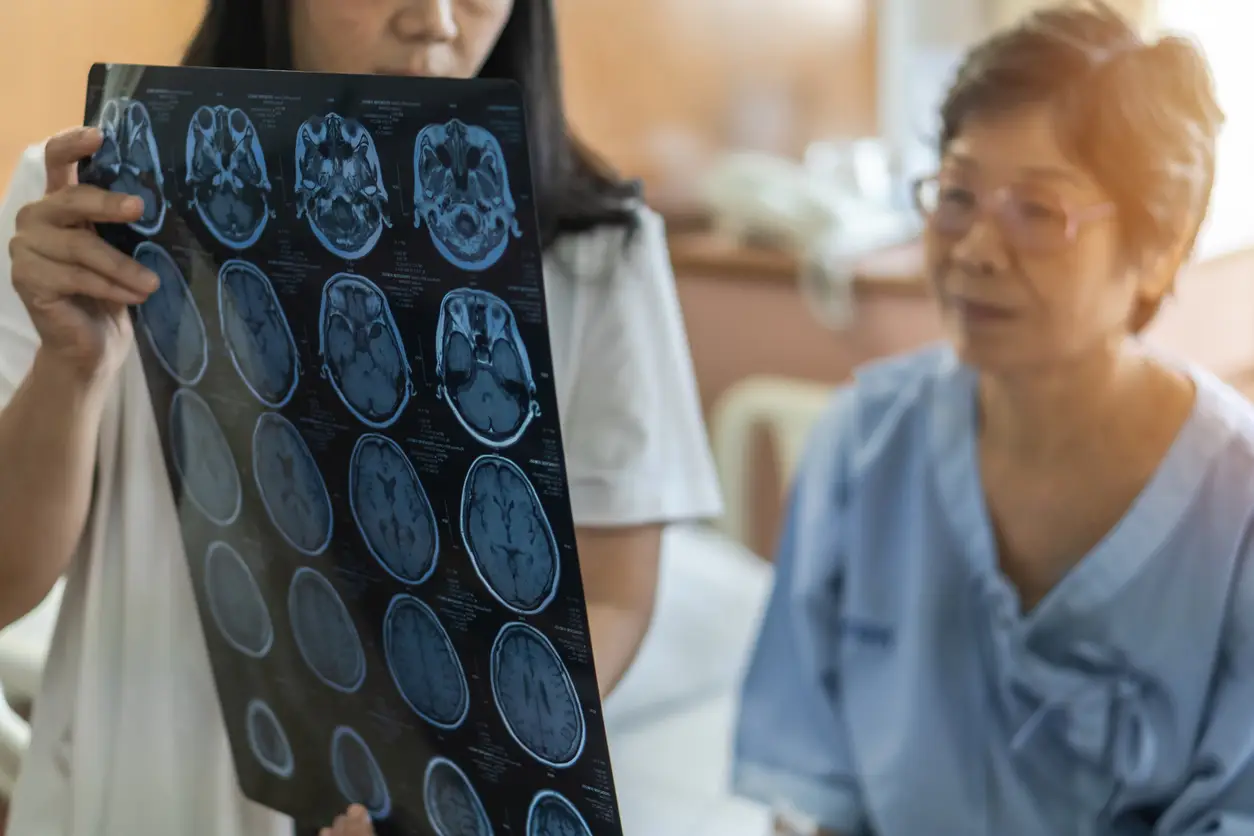The Symptom Trap
Headache is one of the most common complaints in medicine—and paradoxically, one of the most elusive to define. Unlike hypertension, appendicitis, or a fractured bone, headache has no lab test, no universally visible anatomical abnormality, and no consistent biomarker. Instead, it exists primarily within the subjective realm of patient experience. Pain is real, but its origins are often obscured by how the medical system has chosen to name and classify it. Headache is a silent disease.
The consequence of this approach is that diagnosis is based less on objective findings and more on pattern recognition and patient-reported symptoms. This creates both diagnostic ambiguity and therapeutic paralysis. Conditions like “migraine,” “tension headache,” and “occipital neuralgia” are categorized by how they feel—not by what causes them. In this model, anatomy is often an afterthought.

A Taxonomy of Symptoms, Not Causes
The International Classification of Headache Disorders (ICHD), the dominant diagnostic tool used by neurologists worldwide, organizes headaches into hundreds of categories. Yet the diagnostic criteria for nearly all of them are rooted in symptom description: location of pain, duration, quality (pulsating vs. dull), presence of nausea or aura, photophobia, and aggravation with activity.
These are helpful for recognizing patterns, but they are not diagnoses in the traditional medical sense. When a patient is told they have “migraine without aura” or “new daily persistent headache,” it does not necessarily reflect an understanding of *why* they have it. It simply means their symptoms fit a predefined diagnostic picture.
The analogy would be calling a chronic cough “productive respiratory syndrome” rather than looking for pneumonia, GERD, or bronchitis. Yet in headache medicine, this symptom-labeling model persists as the standard.
The Limits of Imaging and Testing
Part of why headache remains a symptom-based diagnosis is that conventional testing often yields nothing. CT scans and MRIs are primarily used to rule out dangerous structural abnormalities: tumors, hemorrhages, aneurysms. In the absence of such findings, patients are often told everything is “normal.”
However, this does not mean the patient is healthy. It simply means that the imaging modalities currently in use cannot detect functional or soft tissue abnormalities that might be causing pain. Tight muscle bands compressing nerves, inflamed fascia, and fibrous entrapments do not show up clearly on MRI.
As a result, patients are sent home with a symptom-based diagnosis and a prescription—not because the problem isn’t real, but because it isn’t visible using the tools being applied.
The Fallibility of Patient-Reported Criteria
Pain is subjective, and while patient descriptions are crucial, they are also fallible. People describe pain differently based on vocabulary, emotional state, cultural background, and past experiences. A throbbing pain in one patient might be described as dull pressure by another.
More critically, patients rarely know how to localize their pain with anatomical accuracy. A patient might report pain “behind the eye,” when the origin is actually from a compressed supraorbital nerve above the brow. Another might say the pain wraps “like a band around the head,” when it is referred pain from the occipital nerves.
Relying exclusively on patient descriptions without physical examination or anatomical insight can lead to significant misclassification—and thus mismanagement.
Overlap and Diagnostic Drift
Another limitation of the current classification system is the amount of diagnostic overlap. Many patients fulfill criteria for multiple headache types. A single patient may experience:
- Migrainous features (nausea, photophobia)
- Tension-type qualities (bilateral, pressure)
- Occipital pain consistent with neuralgia
Do they have three disorders, or one root cause manifesting with overlapping symptoms?
Without a guiding anatomical framework, the result is often diagnostic drift. Patients cycle through multiple labels over time—migraine, chronic migraine, new daily persistent headache, hemicrania continua, and even psychiatric overlays like somatization disorder.
The Missed Opportunity of Physical Examination
In the modern clinical encounter, physical examination has become secondary to history and imaging. In headache medicine, this is especially unfortunate. A neurologist exam includes looking in the eyes and ears, balance testing, strength testing to assess symmetry, and reflexes to asses general neurological function. But much is missed- a thorough examination of the head, neck, and facial trigger points can often reveal tenderness, nodularity, and nerve irritability that directly correlates with the patient’s symptoms.
Palpation of the occipital ridge, the supraorbital notch, or the the temple or pre-auricular region can sometimes reproduce or even intensify a patient’s pain—a strong indicator of peripheral nerve involvement. Yet these areas are rarely examined in detail by most neurologists or primary care providers.
In this sense, many diagnoses remain untethered to anatomy. A patient might be given a label like “intractable migraine” without anyone actually touching the site where the pain originates.
The Diagnostic Power of Nerve Blocks
One of the most underutilized but revealing tools in the evaluation of chronic headaches is the diagnostic nerve block. By injecting a small amount of anesthetic around a suspected peripheral nerve (such as the greater occipital or supraorbital), clinicians can determine whether the nerve is responsible for the pain.
If the patient experiences complete but temporary relief, it provides strong evidence that the nerve is a pain generator. This transforms the diagnosis from speculative to mechanistic. We are no longer asking what the pain *feels like*; we are identifying *where* it starts.
Unfortunately, nerve blocks are rarely part of the diagnostic pathway in mainstream neurology, despite their low cost and high yield. And as an early diagnostic tool, they are rarely reimbursed by health insurance. Too many doctors are not going to take the time to perform a test that they are not going to get paid for, even if that test can point the way to causality and relief. The result is that a powerful anatomical diagnostic tool is overlooked in favor of symptom labels.
Consequences for Treatment and Prognosis
When diagnosis is based solely on symptoms, treatment follows suit. Migraine gets triptans. Chronic migraine gets Botox. Neuralgia gets anti-convulsants. Tension headache gets NSAIDs and stress reduction.
These treatments are often palliative, not curative. They often manage symptoms but do not address causes. If the underlying problem is nerve compression, no amount of medication will decompress the nerve. In the large patient population who don’t respond to these classic therapies, hope is often lost.
Moreover, symptom-based treatment leads to polypharmacy and frustration. Patients try dozens of medications over years, often with diminishing returns and accumulating side effects. They become labeled as “refractory” or “complex” when, in fact, their pain has a physical source that has not been addressed.
A Need for Mechanism-Based Thinking
Headache medicine must evolve from symptom-based classification to mechanism-based diagnosis. Instead of asking only, “What does the pain feel like?”, we must also ask:
- Where is the pain likely originating?
- What anatomical structures lie beneath the pain area?
- Can the pain be reproduced or relieved by examining or treating those structures?
This shift would align headache diagnosis with other medical specialties. In cardiology, we do not classify chest pain only by how it feels—we use EKGs, imaging, and enzyme tests to locate the origin. In orthopedics, joint pain is evaluated by physical exam, MRI, and occasionally diagnostic injections.
Headache medicine must integrate similar rigor. The pain may be subjective, but the body is not invisible.
The Role of Peripheral Nerve Compression
Increasingly, research and clinical experience suggest that many chronic headaches originate from irritated or compressed peripheral nerves. These nerves—supraorbital, supratrochlear, zygomaticotemporal, greater occipital, and others—travel through tight anatomical spaces.
Muscles, fascia, and bony ridges can entrap them, creating a chronic pain signal that is misinterpreted by the brain as migraine or tension headache. When the source is relieved, either by injection or surgery, the headache disappears.
This is a radical departure from the conventional model. It also explains why patients with normal brain scans and failed medications can still suffer severe head pain: the origin is outside the skull.
Toward a Better Model of Headache Care
To better serve patients, clinicians need a dual framework:
- A symptom-based taxonomy that helps describe what the patient is experiencing
- An anatomical, mechanism-based approach that helps determine *why* the symptoms exist
This combined model would encourage:
- Greater use of physical examination in headache evaluation
- Incorporation of diagnostic nerve blocks as a standard tool
- Awareness of peripheral nerve compression syndromes as legitimate causes of chronic pain
Ultimately, it would reduce the number of patients lost in a maze of labels, medications, and hopelessness.

Seeing the Invisible
The greatest tragedy of symptom-based diagnosis is not that it is wrong, but that it is incomplete. By focusing solely on what patients feel, and not where their pain arises, the medical system often fails to see the invisible hands beneath the surface.
Chronic headache sufferers deserve more than a label and a lifetime of prescriptions. They deserve a thoughtful, thorough, and anatomical approach that seeks not just to describe their pain, but to understand and resolve it.
A shift in mindset—from symptoms to sources—could change everything.
The pursuit of real relief begins with a deeper understanding of where pain originates. For many patients, lasting results don’t come from masking symptoms, but from identifying and treating the physical source—often hidden in compressed nerves or structural tension. In cases like a tension headache, this source may involve muscular strain or nerve irritation that standard treatments overlook. By combining symptom awareness with anatomical insight, we move closer to solutions that don’t just manage headaches, but actually resolve them.

